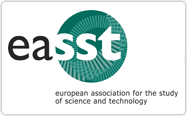6.15%: Taking Numbers at Interface Value
Abstract
This article discusses a number, 6.15%, as it comes into being in the course of an evaluation study of education in a southern Afghan province. This number indicates that out of 100 school-aged girls 6.15 go to school. While this kind of number may invite refl ections on its epistemic accuracy, more often it draws attention to its inherent negative — the girls that do not go to school — substantiating a need for sustained international commitment. As this article will show, numbers work to establish girls as research entities, as part of populations, and as a concern for the Afghan government and the international intervention. This interfacing work of numbers — between girls, states, interventions, and research protocols — is often absent from academic work that takes numbers to be stable and passive tools with which the world can be known. This article, instead, takes numbers to have an internally complex multiplicity and to actively engage with their environments. In this article, I use the interface between numbers and environment as a space for ethnographic exploration of world-making. By describing three moments in the lifecycle of the number — data cleaning, analysis and presentation — I describe three distinct moments of interfacing in which the number comes to act in three capacities: effecting reference, constituting proportional comparison, and evoking doubt and certainty. Detailed understanding of numbering practices provides an opportunity to not just critically assess numbers as end products but to carefully assess the worlds that emerge alongside numbering practices and the ways in which numbers contribute in processes of governance.





